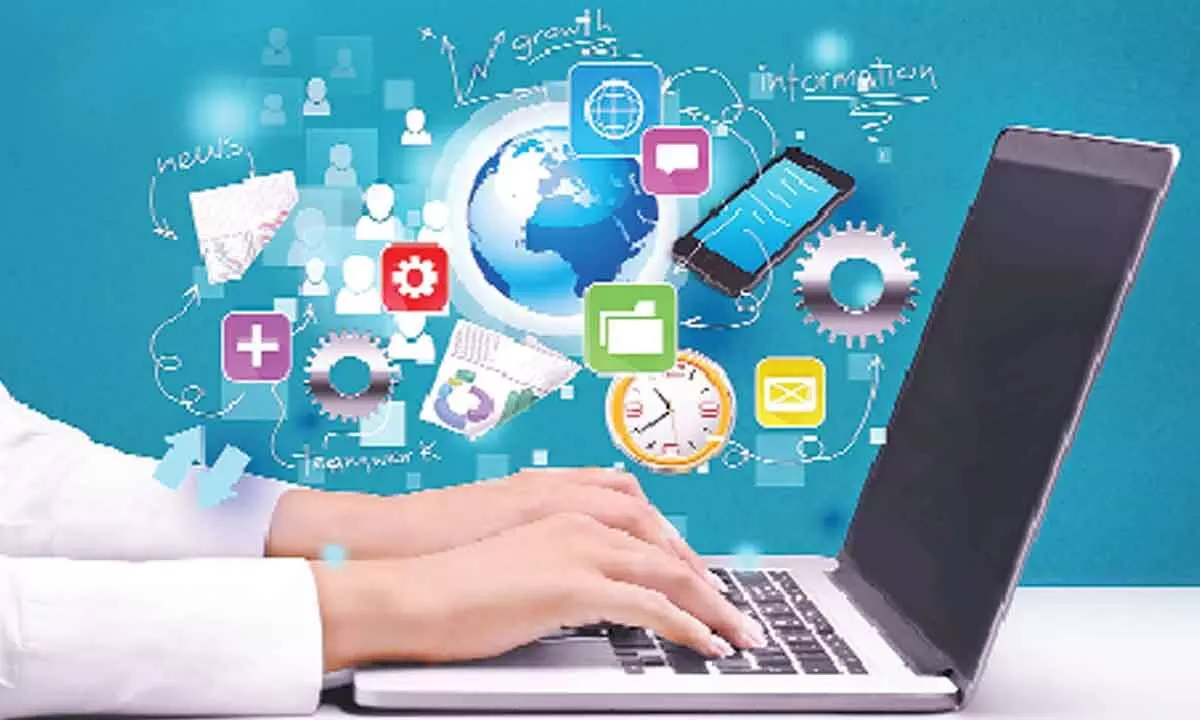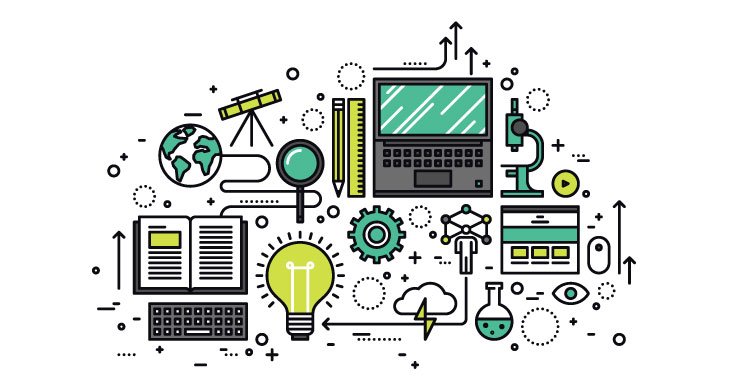Change Your Career Path with Cutting-edge Education Programs and Courses
Change Your Career Path with Cutting-edge Education Programs and Courses
Blog Article
Innovative Techniques for Enhancing Modern Technology Education in Today's Knowing Environments
The progressing landscape of innovation education and learning demands a reevaluation of standard instructional methods to better furnish pupils for the complexities of the modern world. Cutting-edge strategies, such as hands-on learning experiences and collective project-based campaigns, play an essential function in connecting academic principles with practical applications. Additionally, the assimilation of on the internet resources and gamification can boost interaction and inspiration amongst students. As we explore these methodologies, it ends up being necessary to think about just how individualized knowing can even more enrich the educational experience and cultivate a deeper connection in between students and modern technology. What might this mean for the future of education and learning?
Hands-On Discovering Experiences
Hands-on understanding experiences serve as a cornerstone in technology education, successfully linking the void in between academic knowledge and useful application. These experiential activities allow trainees to engage directly with tools, software application, and innovation, promoting a much deeper understanding of ideas that are typically abstract in traditional classroom setups.
By including hands-on understanding, instructors can promote a setting where pupils can experiment, introduce, and troubleshoot. This technique not only grows technical skills yet additionally boosts analytical capabilities, as trainees are encouraged to confront real-world obstacles. In addition, hands-on experiences usually result in raised student motivation and involvement, as learners see the instant significance of their researches to practical scenarios.
Additionally, such experiences can take numerous kinds, including laboratory experiments, simulations, and interactive jobs, all of which deal with various discovering styles. The assimilation of hands-on knowing in technology education and learning also advertises retention of information, as pupils are most likely to remember principles they have proactively dealt with as opposed to passively observed. Overall, hands-on experiences are crucial in preparing trainees for the complexities of the modern technological landscape, outfitting them with the skills and self-confidence needed to prosper in their future careers.
Collective Project-Based Learning
Collective project-based discovering empowers trainees to collaborate in groups to address complicated, real-world troubles, fostering vital abilities for the modern workforce. This strategy encourages active involvement, important reasoning, and creativity, as trainees discuss duties, share responsibilities, and jointly design solutions. By immersing themselves in jobs that mirror authentic challenges, learners establish a much deeper understanding of the topic while honing their ability to interact and work together properly.
In modern technology education, collective project-based discovering can materialize via interdisciplinary tasks that include components of layout, design, and coding. For instance, students might collaborate to create a mobile application or style a prototype that deals with a societal problem, requiring them to integrate various technological concepts and tools. This experiential discovering not just improves technical proficiency but additionally grows analytical skills and adaptability.
In addition, such joint ventures promote a feeling of community amongst trainees, fostering social relationships and a common dedication to their job outcomes. As they browse the complexities of synergy, students find out to appreciate varied point of views and utilize each other's toughness, preparing them for future specialist atmospheres where collaboration is crucial. Ultimately, collective project-based learning is a keystone of effective innovation education.
Integration of Online Resources

The combination of on-line sources helps with accessibility to updated information and market standards, which is essential in a swiftly progressing technological landscape. By leveraging systems such as MOOCs (Enormous Open Online Courses) and specialized instructional internet sites, educators can supplement typical curricula with real-world applications, making it possible for trainees to involve with present trends and techniques.

Eventually, the thoughtful integration of on-line resources in technology education and learning cultivates a much more dynamic, interesting, and appropriate learning experience, outfitting trainees with the abilities and knowledge essential to prosper in an increasingly digital globe.
Gamification Methods in Education
The unification of gamification techniques in education and learning represents an effective technique to even more involve trainees and enhance their understanding experiences. By integrating game-like components such as points, badges, and leaderboards right into the educational program, educators can boost inspiration and promote a feeling of competition amongst learners. These methods encourage involvement and persistence, especially in topics that may or else appear daunting.
Gamification can take various kinds, including interactive tests, collaborative jobs, and immersive simulations, which allow trainees to use their knowledge in useful contexts. This interactive strategy not only makes finding out satisfying but additionally enhances essential concepts via rep and immediate responses. As trainees development, they can track their achievements, promoting a growth frame of mind and a feeling of success.
Additionally, gamification promotes differentiated direction by satisfying varied understanding designs and paces. Students are equipped to take possession of their discovering trip, permitting for a more tailored educational experience. In a progressively digital world, the use of gamification methods can connect the space in between typical education and learning and modern-day technical advancements, ultimately preparing students for future challenges.
Personalized Learning Approaches
Personalized learning methods are increasingly recognized as important for dealing with the diverse needs and choices of pupils in today's instructional landscape. These methods equip learners by tailoring educational experiences to individual interests, toughness, and finding out speeds, thus enhancing engagement and retention.
In modern technology education and learning, customized knowing can take various forms, consisting of adaptive learning technologies, customized curricula, and project-based learning customized to trainee interests. For instance, systems that utilize artificial knowledge can evaluate a student's efficiency data to advise certain resources or tasks that line up with their understanding design.
Additionally, individualized discovering urges pupil company, allowing learners to establish goals and pick pathways that reverberate with their goals (Grants). This freedom fosters a deeper link to the material, eventually leading to enhanced end results
Educators play a vital duty in this process, utilizing developmental assessments to Insurance keep an eye on progress and adjust direction as necessary. Collaborative tools and electronic profiles can additionally facilitate customized discovering, permitting trainees to reflect on their journeys and showcase their success.
Verdict
In conclusion, enhancing innovation education and learning in modern understanding environments necessitates the application of ingenious methods that focus on hands-on understanding, joint projects, and the integration of online resources. Gamification methods serve to enhance interaction and motivation, while customized knowing techniques fit private staminas and foster trainee company. Collectively, these techniques create a dynamic educational experience that prepares students for real-world challenges and grows crucial abilities for future success in a swiftly progressing technical landscape.
As we check out these approaches, it becomes vital to think about how personalized learning can further improve the instructional experience and promote a deeper connection in between trainees and technology. The assimilation of hands-on discovering in innovation education additionally promotes retention of information, as pupils are a lot more likely to bear in mind principles they have actually proactively functioned with instead than passively observed.The consolidation of gamification techniques in education and learning represents an effective technique to even more involve trainees and enhance their discovering experiences. Students are encouraged to take ownership of their understanding journey, permitting for a much more personalized academic experience.In conclusion, boosting technology education and learning in contemporary discovering environments demands the implementation of cutting-edge strategies that focus on hands-on learning, collective tasks, and the integration of on-line resources.
Report this page